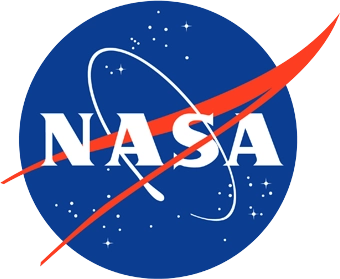2025.
"Slow Radiolysis of Amino Acids in Mars-Like Permafrost Conditions: Applications to the Search for Extant Life on Mars."
Astrobiology 25 (9):
601-610
[10.1177/15311074251366249]
[Journal Article/Letter]
2025.
"Stable Nitrogen Isotope Analysis of Amino Acids by Orbitrap Mass Spectrometry: Application for Extraterrestrial Samples."
Rapid Communications in Mass Spectrometry 39 (23):
e10127
[10.1002/rcm.10127]
[Journal Article/Letter]
2025.
"Challenges and Opportunities in Using Amino Acids to Decode Carbonaceous Chondrite and Asteroid Parent Body Processes."
Astrobiology [Full Text]
[10.1089/ast.2025.0017]
[Journal Article/Letter]
2025.
"Abundant ammonia and nitrogen-rich soluble organic matter in samples from asteroid (101955) Bennu."
Nature Astronomy [Full Text]
[10.1038/s41550-024-02472-9]
[Journal Article/Letter]
2024.
"Simplified Meteorite Parent Body Alteration of Amino Acids by Hydrothermal Processes."
Astrobiology 24 1063-1073
[10.1089/ast.2024.0096]
[Journal Article/Letter]
2024.
"Operational considerations for approximating molecular assembly by Fourier transform mass spectrometry."
Frontiers in Astronomy and Space Sciences 11
[10.3389/fspas.2024.1485483]
[Journal Article/Letter]
2024.
"Understanding Titan’s Prebiotic Chemistry: Synthesizing Amino Acids Through Aminonitrile Alkaline Hydrolysis."
ACS Earth and Space Chemistry 8 (12):
2380–2392
[10.1021/acsearthspacechem.4c00114]
[Journal Article/Letter]
2024.
"Analyzing the Mineralogy and Space Weathering Characteristics of the Finest Fraction in Apollo Core Sample 73002."
Journal of Geophysical Research: Planets 129 e2024JE008528 [Full Text]
[10.1029/2024JE008528]
[Journal Article/Letter]
2024.
"Analyzing the Mineralogy and Space Weathering Characteristics of the Finest Fraction in Apollo Core Sample 73002."
Journal of Geophysical Research: Planets 129 e2024JE008528 [Full Text]
[10.1029/2024JE008528]
[Journal Article/Letter]
2024.
"Radiolytic Effects on Biological and Abiotic Amino Acids in Shallow Subsurface Ices on Europa and Enceladus."
Astrobiology 24 (7):
698-709
[10.1089/ast.2023.0120]
[Journal Article/Letter]
2024.
"Enantioselective three-dimensional high-performance liquid chromatographic determination of amino acids in the Hayabusa2 returned samples from the asteroid Ryugu."
Journal of Chromatography Open 5 100134
[10.1016/j.jcoa.2024.100134]
[Journal Article/Letter]
2024.
"Soluble Organic Compounds and Cyanide in Apollo 17 Lunar Samples: Origins and Curation Effects."
Journal of Geophysical Research: Planets 129 (4):
[10.1029/2023je008133]
[Journal Article/Letter]
2023.
"Polycyclic aromatic hydrocarbons in samples of Ryugu formed in the interstellar medium."
Science 382 (6677):
1411-1416
[10.1126/science.adg6304]
[Journal Article/Letter]
2023.
"Investigating the impact of x‐ray computed tomography imaging on soluble organic matter in the Murchison meteorite: Implications for Bennu sample analyses."
Meteoritics and Planetary Science
[10.1111/maps.14111]
[Journal Article/Letter]
2023.
"Soluble organic matter Molecular atlas of Ryugu reveals cold hydrothermalism on C-type asteroid parent body."
Nature Communications 14 (1):
6525 [Full Text]
[10.1038/s41467-023-42075-y]
[Journal Article/Letter]
2023.
"Chemical evolution of primordial salts and organic sulfur molecules in the asteroid 162173 Ryugu."
Nature Communications 14 (1):
5284
[10.1038/s41467-023-40871-0]
[Journal Article/Letter]
2023.
"The spatial distribution of soluble organic matter and their relationship to minerals in the asteroid (162173) Ryugu."
Earth, Planets and Space 75 (1):
73
[10.1186/s40623-023-01792-w]
[Journal Article/Letter]
2023.
"PAHs, hydrocarbons, and dimethylsulfides in Asteroid Ryugu samples A0106 and C0107 and the Orgueil (CI1) meteorite."
Earth, Planets and Space 75 (1):
28 [Full Text]
[10.1186/s40623-022-01758-4]
[Journal Article/Letter]
2023.
"Extraterrestrial Amino Acids and Amines Identified in Asteroid Ryugu Samples Returned by the Hayabusa2 Mission."
Geochimica et Cosmochimica Acta 347 42-57 [Full Text]
[10.1016/j.gca.2023.02.017]
[Journal Article/Letter]
2023.
"Soluble organic molecules in samples of the carbonaceous asteroid (162173) Ryugu."
Science 379 (6634):
eabn9033 [Full Text]
[10.1126/science.abn9033]
[Journal Article/Letter]
2022.
"Rapid Radiolytic Degradation of Amino Acids in the Martian Shallow Subsurface: Implications for the Search for Extinct Life."
Astrobiology 22 (9):
1099-1115 [Full Text]
[10.1089/ast.2021.0166]
[Journal Article/Letter]
2021.
"Low total abundances and a predominance of n ‐ω‐amino acids in enstatite chondrites: Implications for thermal stability of amino acids in the inner solar system."
Meteoritics & Planetary Science 56 (11):
2118–2127 [Full Text]
[10.1111/maps.13757]
[Journal Article/Letter]
2021.
"Extraterrestrial hydroxy amino acids in CM and CR carbonaceous chondrites."
Meteoritics & Planetary Science 56 (6):
1005-1023 [Full Text]
[10.1111/maps.13661]
[Journal Article/Letter]
2021.
"The impact and recovery of asteroid 2018 LA."
Meteoritics & Planetary Science 56 (4):
844–893 [Full Text]
[10.1111/maps.13653]
[Journal Article/Letter]
2020.
"Analysis of amino acids, hydroxy acids, and amines in CR chondrites."
Meteoritics & Planetary Science 55 (11):
2422-2439 [Full Text]
[10.1111/maps.13586]
[Journal Article/Letter]
2020.
"Analysis of amino acids, hydroxy acids, and amines in CR chondrites."
Meteoritics & Planetary Science [Full Text]
[10.1111/maps.13586]
[Journal Article/Letter]
2020.
"Prokaryotic and Fungal Characterization of the Facilities Used to Assemble, Test, and Launch the OSIRIS-REx Spacecraft."
Frontiers in Microbiology 11 530661 [Full Text]
[10.3389/fmicb.2020.530661]
[Journal Article/Letter]
2020.
"Abundant extraterrestrial amino acids in the primitive CM carbonaceous chondrite Asuka 12236."
Meteoritics & Planetary Science 55 (9):
1979–2006 [Full Text]
[10.1111/maps.13560]
[Journal Article/Letter]
2020.
"Extraterrestrial organic compounds and cyanide in the CM2 carbonaceous chondrites Aguas Zarcas and Murchison."
Meteoritics & Planetary Science 55 (7):
1509-1524 [Full Text]
[10.1111/maps.13531]
[Journal Article/Letter]
2020.
"Extraterrestrial amino acids and L-enantiomeric excesses in the CM2 carbonaceous chondrites Aguas Zarcas and Murchison."
Meteoritics & Planetary Science 56 (1):
148–173 [Full Text]
[10.1111/maps.13451]
[Journal Article/Letter]
2019.
"New insights into the heterogeneity of the Tagish Lake meteorite: Soluble organic compositions of variously altered specimens."
Meteoritics & Planetary Science 54 1283-1302
[10.1111/maps.13276]
[Journal Article/Letter]
2019.
"The Sariçiçek howardite fall in Turkey: Source crater of HED meteorites on Vesta and impact risk of Vestoids."
Meteoritics & Planetary Science 54 (5):
953-1008 [Full Text]
[10.1111/maps.13258]
[Journal Article/Letter]
2018.
"Effect of polychromatic X-ray microtomography imaging on the amino acid content of the Murchison CM chondrite."
Meteoritics & Planetary Science 54 (1):
220–228 [Full Text]
[10.1111/maps.13188]
[Journal Article/Letter]
2016.
"Aliphatic Amines in Antarctic CR2, CM2, and CM1/2 Carbonaceous Chondrites."
Geochimica et Cosmochimica Acta 189 296-311 [Full Text]
[10.1016/j.gca.2016.06.018]
[Journal Article/Letter]
2016.
"Evaluation of the robustness of chromatographic columns in a simulated highly radiative Jovian environment."
Planetary and Space Science 122 38-45
[10.1016/j.pss.2016.01.004]
[Journal Article/Letter]
2015.
"DISTRIBUTION AND ORIGIN OF AMINO ACIDS IN LUNAR REGOLITH SAMPLES."
46th Lunar and Planetary Science Conference (2015)
[Proceedings]
2015.
"Amino acid analyses of R and CK chondrites."
Meteoritics & Planetary Science 50 (3):
470-482 [Full Text]
[10.1111/maps.12433]
[Journal Article/Letter]
2010.
"Guanine, Adenine, and Hypoxanthine Production in UV-Irradiated Formamide Solutions: Relaxation of the Requirements for Prebiotic Purine Nucleobase Formation."
ChemBioChem 11 (9):
1240
[10.1002/cbic.201000074]
[Journal Article/Letter]
